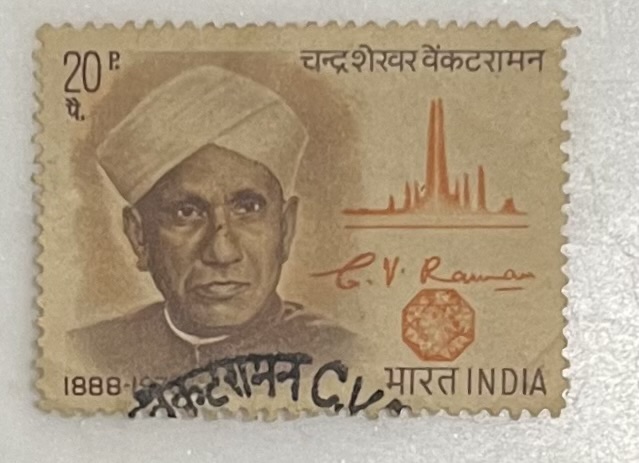CV Raman stamp – India, 1971 was launched by India post in 1971 on 1 year death anniversary of the physicist CV Raman.
About CV Raman
Sir Chandrasekhara Venkata Raman was an Indian physicist known for his work in the field of light scattering. Using a spectrograph that he developed, he and his student K. S. Krishnan discovered that when light traverses a transparent material, the deflected light changes its wavelength and frequency. This phenomenon, a hitherto unknown type of scattering of light, which they called “modified scattering” was subsequently termed the Raman effect . Raman received the 1930 Nobel Prize in Physics for the discovery and was the first Asian to receive a Nobel Prize in any branch of science.
Raman effect
Raman scattering or the Raman effect is the inelastic scattering of photons by matter, meaning that there is both an exchange of energy and a change in the light’s direction. Typically this effect involves vibrational energy being gained by a molecule as incident photons from a visible laser are shifted to lower energy. This is called normal Stokes Raman scattering. The effect is exploited by chemists and physicists to gain information about materials for a variety of purposes by performing various forms of Raman spectroscopy. Many other variants of Raman spectroscopy allow rotational energy to be examined (if gas samples are used) and electronic energy levels may be examined if an X-ray source is used in addition to other possibilities.
About the stamp
One of India’s most revered scientists and the Nobel prize-winning Physicist, Sir Chandrasekhara Venkata Raman, more popularly known as C V Raman, was born on November 7, 1888, and passed away in 1970. This stamp was issued in 1971 (on his 1 year death anniversary) to acknowledge the great achievements of the physicist. Check out more interesting personality stamps about Indian here.
